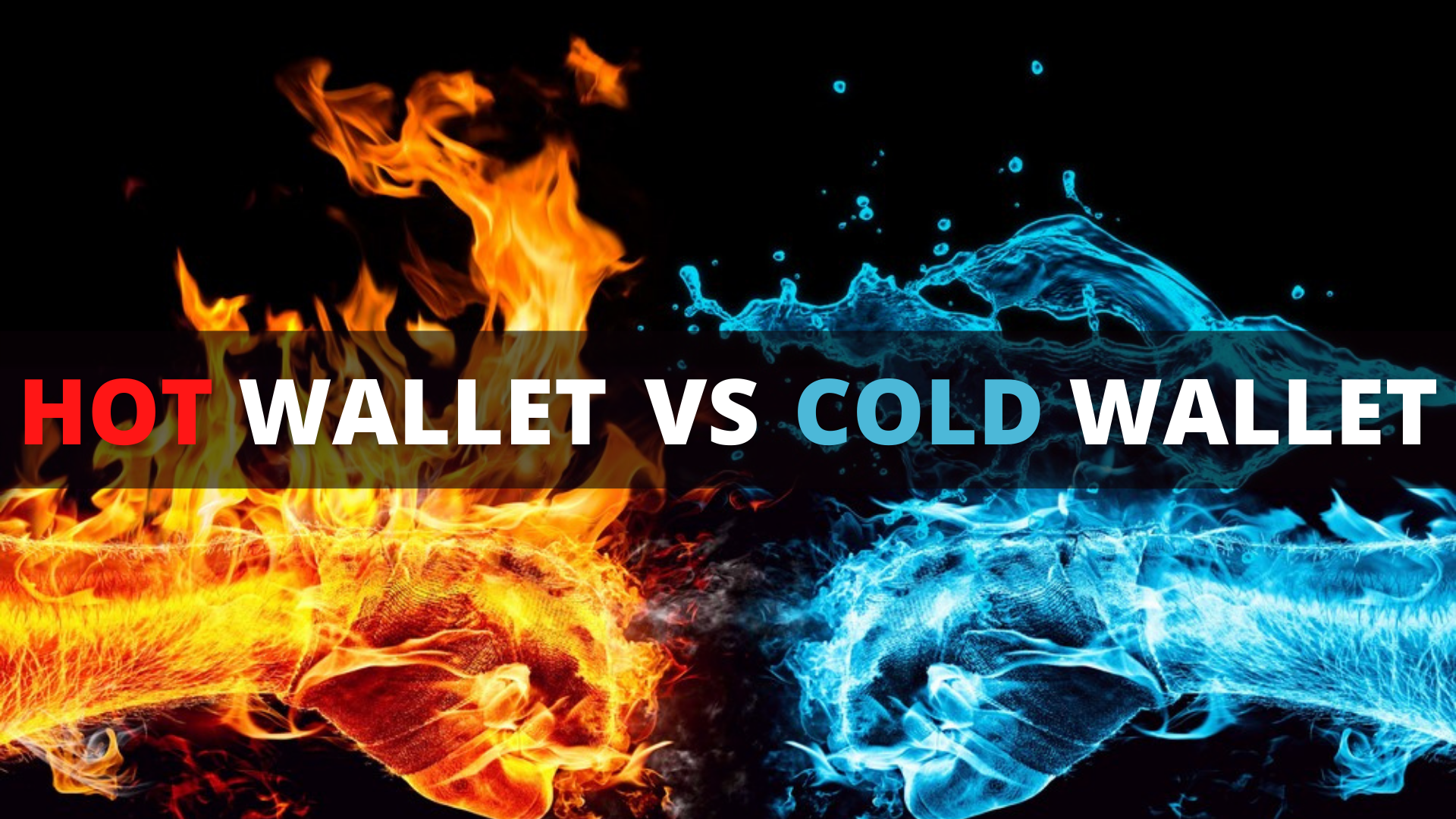Created by Ethereum co-founder Gavin Wood and launched in May 2020, Polkadot (DOT) is one of a number of blockchains aiming to cultivate an entire ecosystem of cryptocurrencies, much like Ethereum (ETH), EOSIO (EOS) and Cosmos (ATOM).
Polkadot is a blockchain protocol created to connect multiple specialised blockchains onto one unified network. It relies on a network protocol that allows not only tokens, but arbitrary data to be transferred between blockchains. This allows for interoperability between each blockchain network.
Polkadot is currently one of the most promising blockchain networks out there in the cryptocurrency space due to it’s ability to connect different blockchains on its platform and its simplicity in supporting and developing new blockchains.
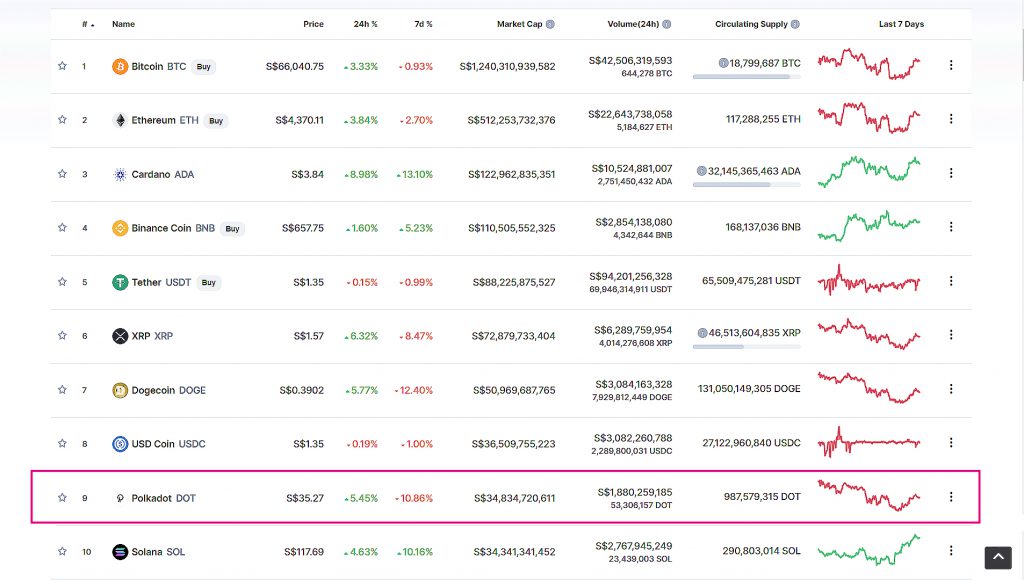
Despite being only launched last year for active trading and transferability, the project has accrued value quickly. With a current market cap of $34B, Polkadot’s native DOT token currently holds the ninth largest cryptocurrency by market cap.
“Polkadot empowers the individual against much more powerful corporate and state actors.”
Dr. Gavin Wood, Polkadot Founder
Polkadot aims to cultivate a more decentralised and inclusive internet architecture with support from the research-driven non-profit Web3 Foundation.
A blockchain connecting blockchains
Traditional blockchains like Ethereum have a history of being congested, leading to increased fees, while blockchains like EOS offer almost instant transactions but are considered by many to be centralised.
Polkadot aims to change those fundamentals with it’s heterogenous network of blockchains, allowing for specific plug-and-play functions depending on the task at hand. It operates based on four main characteristics:
1. Heterogeneity and interoperability
Polkadot’s main feature is that it provides a base upon which other blockchains can be deployed on and work together, making it a platform where various blockchains can interact with each other (interoperability). This can range from private blockchains to oracles, smart contracts, bridges, and many more.
This is achieved through three main types of blockchains on its network: The Relay Chain, Parachains and Bridges.
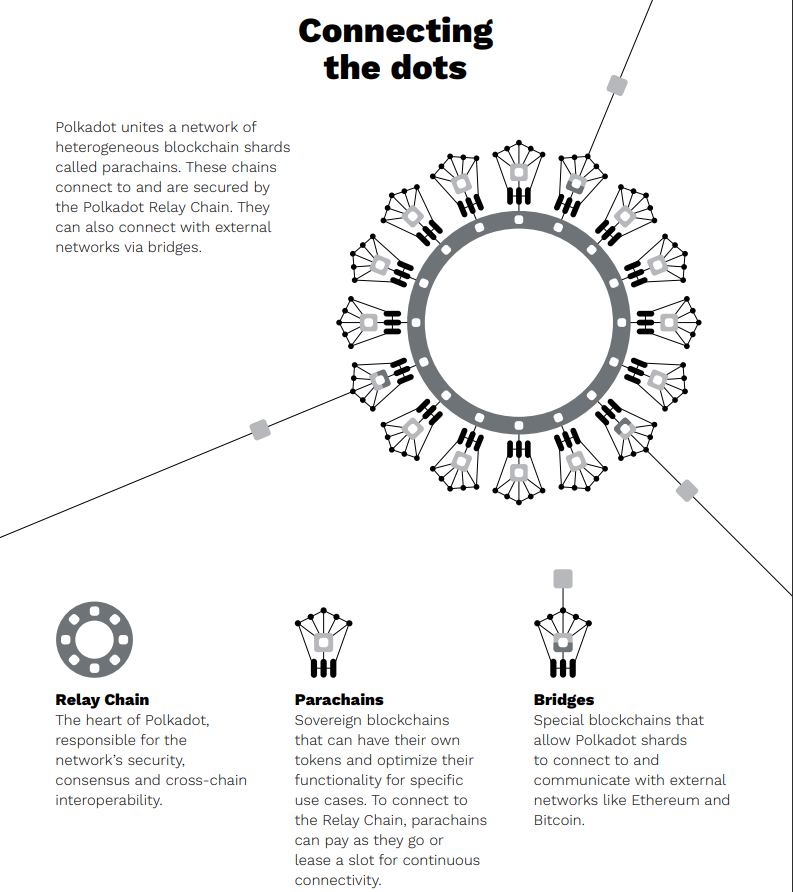
The main body of the Polkadot network is the Relay Chain. It is responsible for the network’s security, consensus and cross-chain interoperability. This is where transactions are finalised. The Relay Chain allows different blockchains to process transactions and exchange data in parallel.
Parachains are unique, standalone (heterogenous) blockchains which can be fully customised to suit each specific task at hand. Each parachain connects to the Relay Chain and is optimised for specific use cases, similar to how different applications provide a different of functions on a phone. An example of this is Ontology (ONT) building a parachain on Polkadot to provide credit-based services for its decentralised identity (DeID) solutions
Parachains run in parallel and are a big advantage over isolated blockchains which process transactions in sequence, causing bottlenecks when networks are congested. This improves scalability greatly, creating the right conditions for increased adoption and future growth.

Bridges allow Polkadot to connect and interact with external blockchains like Bitcoin and Ethereum. Polkadot is constantly developing new bridges to connect to other blockchains so that tokens can be exchanged without a central authority. Bridges are fundamental to Polkadot’s interoperatbility.
2. Shared security ecosystem
Polkadot runs a nominated proof-of-stake system, where any user can nominate validators to validate transactions on its shared security function. Validators provide security and trust-free interoperability for the entire system by staking DOT, which contributes to the security of all projects in the ecosystem.
As all projects built on Polkadot are pooling and sharing resources, the cost of strong security among the network is greatly reduced. This is in contrast to other blockchain networks which requires each blockchain to bootstrap their own security with nominators and validators.

3. Decentralised governance model
Polkadot’s on-chain governance is based on a purely democratised model. All DOT holders have the power to vote for any aspect of network governance from council members to referenda and upgrade proposals.
Such a kind of community-driven governance allows Polkadot to achieve what new features are implemented based on feedback from the community.
Stakeholder voting forms the core of Polkadot's governance. All changes to the protocol must face stake-weighted referenda.
— Polkadot (@Polkadot) September 26, 2019
Read more about Polkadot's governance here: https://t.co/sgGTujdbic pic.twitter.com/X2UvQhnDi0
4. Simple blockchain development
Polkadot’s blockchain development framework — Substrate allows developers to create new personalised, independent blockchains and decentralised apps within minutes.
This plays in to the interoperability and inter-chain connectivity of Polkadot, as external blockchain developers can connect to any other blockchain on the Polkadot network more easily.

Like all software, blockchains need upgrades to stay relevant and improve over time. Substrate allows Polkadot to implement changes directly onto the network without having to fork a new chain.
This means that as new breakthroughs are made in improving the fundamentals of the blockchain, Polkadot can continue to advance with increasing efficiency.
These allow a low barrier to entry for new projects intending to be build on the network, which makes Polkadot an attractive platform for developers.

Comparison with similar projects
Many claim Polkadot to be Ethereum 3.0, as it goes beyond the functionality and vision of Ethereum 2.0 (which was to deliver a system which was far more scalable and interoperable with other blockchains), and has already been running for years.
Since Polkadot’s Relay Chain does not have smart contracts, it’s up to the blockchains plugged into Polkadot to enable smart contracts. Moonbeam (one of Polkadot’s parachains) enables full compatability with Ethereum contacts via Metamask. This means that tokens built on Substrate can be seamlessly sent to Ethereum addresses and wallets.
Parachains allow Polkadot to rebuild Ethereum’s network on its blockchain. Coupled with Polkadot’s lower transaction fees and higher transactions-per-second, this makes Polkadot a desirable alternative.
One of the main problems Polkadot has faced is the share number of already established network platforms. Solana, Ethereum, Cardano and Binance Smart Chain already occupy a major portion of the market.
Polkadot competitior Solana (SOL), processes more transactions per second, incurs less fees and latency, and has more than 8000x its transactions to date. This is mainly due to it’s proof-of-history consensus mechanism.
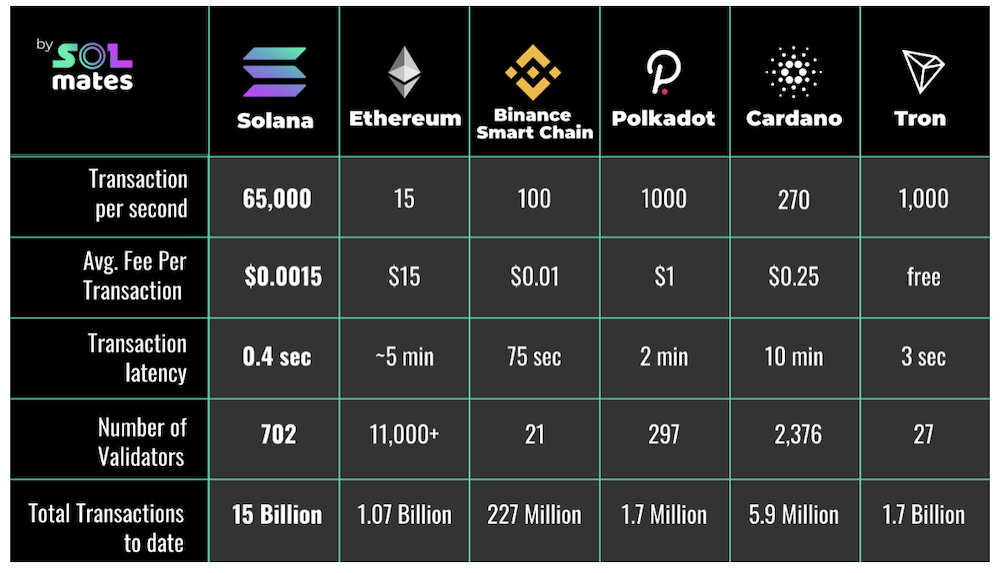
Despite Polkadot’s cross-chain interoperability and enhanced scalability, it’s market cap is currently around 15 times smaller than Ethereum’s. This is due to institutional adoption being a more substantial driving force for crypto valuation than the underlying technology, and institutions are betting on Ethereum despite volatile gas fees and longer transaction times.
Polkadot is still fairly new to the market and might take some time before even wider institutional adoption. Polkadot is unlikely to steal Ethereum’s thunder in the short run, but it’s definitely one of the most interesting technological alternatives that has the potential to revolutionize the blockchain ecosystem.
DOT holders are currently invested in Polkadot’s future-proof technology and the potential for it to bring forth a more connected Web 3.0.
Gaining interest from institutions
Polkadot started to gain interest from large institutions in early 2021, where large institutions began offering DOT investment products.
Osprey Funds launched it’s Polkadot Trust, allowing investors to gain exposure to DOT while at the same time storing their funds in the hands of a reputable investment firm.

On the other hand, Swiss issuer 21Shares AG launched its own DOT product, an Exchange Traded Product (ETP) listed on the Swiss SIX exchange earlier this year, which were bought by Goldman Sachs, JP Morgan and UBS. The reason for the listing — to stay “ahead of the curve” due to surging interest for the cryptocurrency.
The center of Polkadot’s institutional interest stemmed from a bet from Moonrock Capital, an investment fund focusing on passive investments to startups.
From its inception in 2019, the firm’s assets under management grew from 5 figures to 8 figures, with Polkadot driving most of its success. The fund’s massive growth was attributed to looking for products which accelerates the growth of startups.
“The fact that Goldman, JPMorgan and UPS are looking for exposure to DOT is confirming the trend that we have been expecting and planning for at Moonrock Capital. It’s clear now that, after a couple of years of rumours and hearsay, we finally have the attention of major traditional institutional players,”
Simon Dedic, Moonrock Capital co-founder
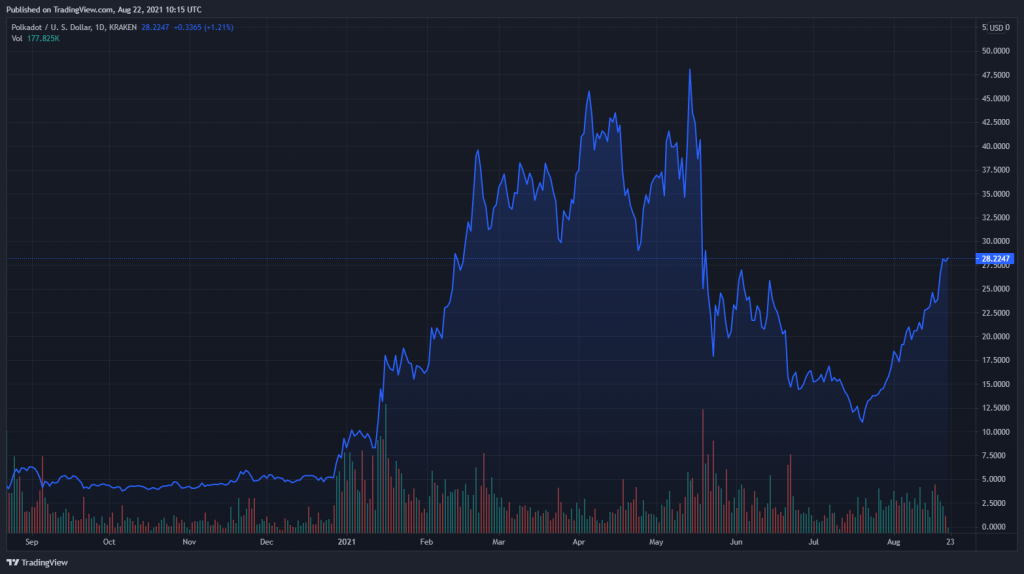
Building the future of Web 3.0

Web 1.0, the first stage of the World Wide Web revolution, came into fruition in the early 1990s. Users of the Internet consumed info in a passive manner, with most content being produced only by big corporations with the resources to do so.
Around 10 years later, Web 2.0 began, allowing users a more multifunctional ‘application’ experience. Users had access to social networking profiles, personal blogs, video channels, and were able to create their own content.
However, many criticize Web 2.0 of being too centralised, paving the way for an overemphasis on chasing profits, unethical advertising, increased surveillance and widespread data theft.
In response, many believe the usage of blockchain will usher in a new Web 3.0 era where decentralised applications are connected directly to each other, giving users control over their privacy and personal data rather than large corporations.
Polkadot is at the forefront of ushering the new Web 3.0 age and is recognised as the flagship project of the Web3 Foundation, which aims to facilitate a fully functional and user-friendly decentralised web.
Do we need interoperability in Web 3.0? The answer is “Yes” and glad to share “The future is coming: Web 3.0 Embraces Interoperability” in World Blockchain Conference in Hangzhou organized by @btcinchina. @Polkadot is bringing interoperability to Web 3.0. pic.twitter.com/01bRbuvRHe
— Q (@jiayaoqi) August 4, 2021
The Polkadot team is currently focusing on the launch of parathreads, parachains with a pay-as-you-go model which allows developers to save costs by paying for Polkadot’s services only when needed. As of the time of writing, there are no other upcoming announcements or milestones with regard to project development.
With a one of a kind future-proof system, increasing interest from institutions and over 400 projects being built on the network, the future is bright with many colours for Polkadot.
Also Read: Here’s A Look At Crypto Protocols With Billions Of Dollars In Revenue



